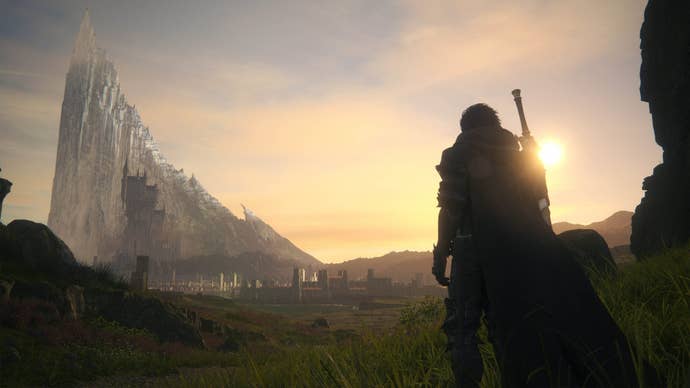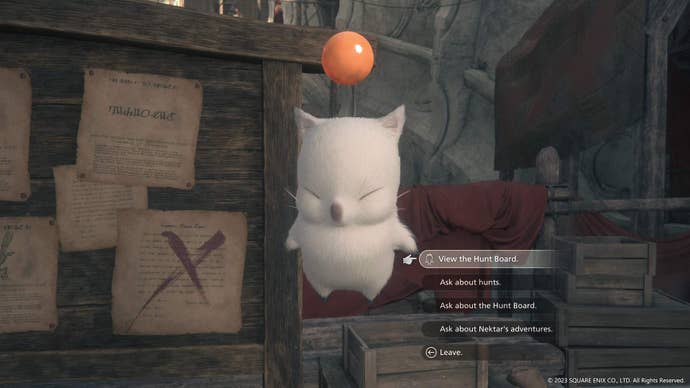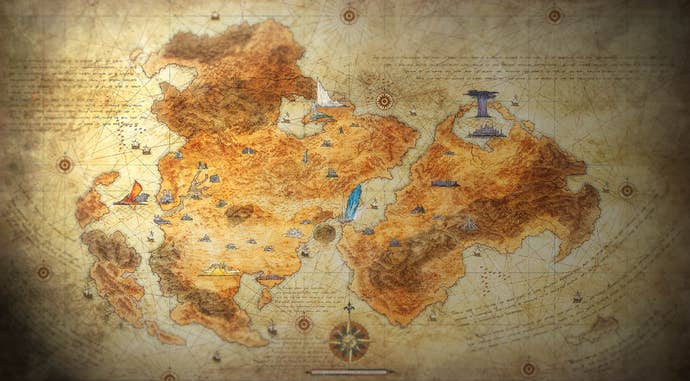Products You May Like
As I sit down to write this article we’re precisely one week from the release of Final Fantasy 16, a little under a week from the review embargo (which will have passed and our FF16 review published by the time you read this), and the game is trending on Twitter. Click the trend and what do you find, though? A bunch of bloody nonsense about if it’s a Final Fantasy game or not.
It’s nonsense from all sides too, by the way. On one hand, you’ve got those who aren’t strictly picking up what FF16 is putting down. These people don’t like the game’s tone and style, which is hugely different to past games, and therefore say that it’s not a FF game. On the other hand, you’ve got fans who are well up for FF16 snarking back, noting how different each FF game is from the last. And here I sit, with 100% completion of the game, desperate to tweet and give both sides a digital slap. But I can’t. So here I am, in the past, writing to you in the future, when I’m finally allowed to talk about the game.
So, let’s start with the big, dumb question, yeah? Is Final Fantasy 16 a Final Fantasy game? Well, of course it is, dummy, shut up – but that doesn’t mean it isn’t complicated.
What I mean by that is: Final Fantasy is whatever Square Enix says it is. The company nominates key staff to act as the stewards of the franchise, and these people craft an artistic vision for what the newest entry in the series should be. This is how it has always been, and how it always will be. This is the only way an expensive piece of art that requires hundreds of people to craft can come to be.
However, are some entirely wrong when they say that FF16 doesn’t feel like Final Fantasy to them? After the better part of 45 hours with the game, I’m here to tell you that they absolutely are not.
I mean, for one, those feelings are subjective. But second – let me posit a theory here for a second – Final Fantasy is actually less radically transformative than people think it is.
Picture in your head for a moment a graph with X and Y axes labeled 1 through 10. Here’s my theory: Final Fantasy has moved around a great deal compared to most video game series, but it’s also moved more or less entirely on one axis. So on the X axis it’s been at a 10, a one, and everywhere in between; but over on the Y axis, it’s moved between 1 and 3, and not really traveled much beyond that.
This formed a comfort zone. The series had a truly radical departure when it presented a punky, technology-infused world with FF7, for instance – but it featured the same gameplay conceits from the previous games, which kept it grounded. In a post-FF7 world, the series experimented with different mechanics more, but the series instead generally grounded itself in a mood, a vibe – characterized by a particular look and feel of character, world, story, and delivery.
This, I think, is what sets FF16 apart. It’s not that it’s an action game – it’s that the typical tone and vibe of a FF that could be relied on no matter the setting or mechanics, is truly different for the first time in 20 years. People like to make the comparison to FF12, and Tactics, but I honestly think those games have more in common with ‘typical’ FF, best typified in FF6 and FF7, than they do with FF16.

This has come about for a lot of reasons. Fans need to admit that Final Fantasy has faded in importance. When FF7 released and sold 10 million copies, it was one of the most important games on the market. Over two decades later, FF15 was the fastest selling entry ever, and yet in its lifetime only barely managed to limp past 10 million even though the video game market has massively expanded. Meanwhile, a peer like The Witcher 3 has now crossed 50 million sold; and even Cyberpunk, with its disastrous launch, has doubled FF15’s sales. In a sense, the series has stagnated – at least commercially.
FF16 is radical for this reason. It’s looked to the likes of Game of Thrones and God of War for inspiration, and is offering up something new. No matter what fans like to say and snark about how FF changes, make no mistake that this is the most radical departure the series has ever made – and if you don’t like it, that’s okay. FF7 Rebirth will be much more traditional and is right around the corner, after all.
All this isn’t to say that FF16 doesn’t feel plenty like FF, however. As the story wears on, it begins to gingerly tiptoe into some more typically ‘FF’ tropes and story beats. Masayoshi Soken’s score pays dutiful homage to several classic FF tunes of old, prominently featuring several from the first game in particular. And there’s a smattering of familiar enemies and concepts. The summons play a prominent role, and are perhaps the greatest thread that binds this to the other games.

By the same token, however, it’s clear that FF16 is treating its origins and history with a little more suspicion than past titles. The bestiary has around 50 creatures in it, for instance – but aside from the summons, only a handful of them are series classics. There’s no Tonberry or Cactuar, for instance. A lot of typical enemies like Goblins and Gigas have been given a look that I’d say feels less like series tradition and closer to typical Western fantasy designs. And there are very traditional fantasy Orcs, which is a series’ first in the single-player arm of the franchise.
There are Chocobos, of course, but when you ride one there’s a little two-bar jingle that teases the Chocobo theme and that’s it; quite different from other games, which have felt the need to blast the theme triumphantly whenever you’re mounted. Money is called Gil in the menus, but NPCs more generally refer to it as Talents, or Gold, and so on. While there are ‘party members’, you control only Clive – and the party is honestly pretty pointless in battle. Where the party structure shines is in what their chatter brings to the narrative.
Quite often, the more typical FF elements leak in via ‘The Fallen’, an ancient long-extinct civilization. The Fallen clearly had airships, for instance. With The Fallen long gone and only characteristically FF-looking ruins left behind, in a funny way this positions FF16 as a post-FF FF game. The people of this world have built something new – something more traditional to Western fantasy – in the hollowed-out ruins of something more FF.

To some extent, FF16 feels appropriately teenaged. Remember when you were 16, and your parents and family and history were all vaguely embarrassing? FF16 feels like it’s suffering from that. Occasionally it has to wear some sweater that it inherited from an older sibling, and sometimes you practically feel the game grimace as it begrudgingly does so. Other times, when it’s something cool even in this new tone, 16 takes the inheritance gladly. But that dichotomy is an important part of growing up; that period shapes and changes us – and it doesn’t change that ultimately being where we came from. Such is the case here.
Like I said, as the game goes on, despite feeling like it’s resisting being too much like its predecessors, FF16 begins to dabble in their predilections. This is especially true as the narrative slowly turns from personal revenge, political intrigue, and warring nations to a gods-and-monsters epic.
The tone is still vastly different, however. This is an awful, grim world. People die in terror, blood-soaked, eyes open. Characters mutilate the bodies of the dead to settle scores with those who loved them; and the heroes don’t have clean hands in this sense, either. Characters curse constantly and colorfully. Innocents are cut, tortured, or incinerated simply for existing. Terrified characters slit their own throats in full view of the camera rather than face some worse fate – which is sometimes the wrath of our protagonist. Not even Ivalice was quite like this, and that’s okay.

It’s all okay, you know? It’s okay to love this. It’s okay to not. It’s okay that Square Enix has done this. It’s better than okay – it’s great, in fact – that the company is experimenting and taking some risks with one of its biggest ever games.
Fans of FF16 should realize that when somebody says that the game doesn’t feel like a typical Final Fantasy to them, it’s not necessarily a pejorative. To deny how different this game is denies reality, and undersells what a great, bold swing Hiroshi Takai’s team has taken with this game.
What they’ve delivered is very, very different – but it enhances the textural richness of the FF series as a whole. And if you don’t like it, there’s always the next game. That has always been the promise of Final Fantasy, after all.
